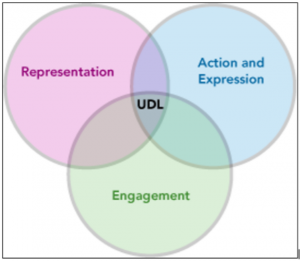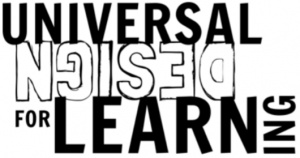 Creating courses designed to meet the needs of a wide range of learners poses a challenge for all educators. Yet recognizing the needs of learners with invisible disabilities creates additional challenges. According to Matthews (2009) invisible disabilities refers to symptoms such as debilitating pain, fatigue, dizziness, cognitive dysfunctions, brain injuries, learning differences, mental health disorders and hearing and vision impairments. When students transition into the college arena, their Individual Education Plans from K-12 and 504 Plans do not automatically transfer with them. It becomes the student’s responsibility to self-identify. Many students with invisible learning disabilities try to conquer learning challenges without help. This creates a further challenge for instructors who are unaware of a person’s particular learning needs.
Creating courses designed to meet the needs of a wide range of learners poses a challenge for all educators. Yet recognizing the needs of learners with invisible disabilities creates additional challenges. According to Matthews (2009) invisible disabilities refers to symptoms such as debilitating pain, fatigue, dizziness, cognitive dysfunctions, brain injuries, learning differences, mental health disorders and hearing and vision impairments. When students transition into the college arena, their Individual Education Plans from K-12 and 504 Plans do not automatically transfer with them. It becomes the student’s responsibility to self-identify. Many students with invisible learning disabilities try to conquer learning challenges without help. This creates a further challenge for instructors who are unaware of a person’s particular learning needs.
Fortunately, utilizing a variety of instructional strategies meets the needs of a wide array of learners including those with invisible learning disabilities. Through a series of articles, information will be shared highlighting both the strengths and needs of learners complemented with strategies designed to meet those learning needs. Studies show that faculty members who are familiar with accommodation strategies are better prepared to make arrangements to ensure that students with disabilities have an equal opportunity (not an unfair advantage) to fully participate in their academic programs (Middlesex County College, 2014). Incorporating techniques that foster a student-centered learning environment optimizes student success.
 Communicating Information through the Syllabus and Course Shell
Communicating Information through the Syllabus and Course Shell
Posting the course syllabus in advance provides students with the opportunity to explore what the course covers as well as what the requirements of the course will be. Students with invisible disabilities benefit from being able to digest the information before coming to class in order to be able to ask questions and participate during class discussions. If students have tutors, they can go over the course together before, during, and after courses begin. Being specific and clear about course expectations and assignment requirements including due dates helps students who require more time the ability to plan and prepare. Providing assessment rubrics also defines the criteria of expected course outcomes. All students benefit from clarity.
Digital Readiness Effects Student Success
As with all things, students vary in their digital competencies. Surveying students to determine their readiness levels for using the course shell; accessing, uploading, and finding information will provide you with feedback on their readiness levels. Encouraging students to utilize library support services as well as the Help desk personnel will help students with difficulties. By including links to tutorials in the course shell, students will be able to gain access and increase their proficiency creating greater opportunities for self-efficacy. Remember once the work is done, course shells transfer and this added benefit will carry through multiple semesters benefiting both the instructor and students alike.
In the December article, information and strategies will be provided covering communicating information with multiple modalities. You may also contact Dr. Kay Harris at fharris@nmc.edu or 231.995.1957 for strategy information or Leanne Baumeler at lbaumeler@nmc.edu or 231.995.1929 for student disability services.

